The following is a collection of my best work (aka ‘Highlights’) from English 301 Technical Writing. The progress of my technical writing and communication skills are best seen in the following list of academic works
Definition Assignment: User Interface
Introduction: The purpose of the following assignment is to define the term and concept of User interface to a non-technical audience through a series of definitions, such as situational , parenthetical, sentence, and expanded definitions. The assignment also utilizes graphic images to portray examples of the term’s definition and its history while maintaining a professional and informative tone.
Reading Situation:
The purpose of defining “user interface” is to provide non-technical readers a simple and more relatable understanding of what a user interface is, how it works and how it can be applied in a technical and non-technical setting.
Parenthetical Definition: When using a technological device, users often use a user interface (a virtual space that visually represents users’ current interaction with their computer) to navigate social media websites.
Sentence Definition: User Interfaces (UI) are virtual spaces that create graphical representations of device’s virtual space that allows users to visually see accurate representations of the specific commands given to the device through a WYSIWYG display (what-you-see-is-what-you-get display).
Expanded Definition:
History
In the 1980’s, computer scientists at Xerox PARC created a graphical user interface which allowed users to interact with computers by using virtual icons. This allowed users, both technical and non-technical to enter in computer commands through virtual buttons or text-boxes as opposed to inputting commands through code. (Figure 1)
Over the years, as technology became more advanced in the 1990’s and early 2000’s, companies like Apple and Microsoft began creating personal computers which allowed even less experienced non-technical users to access computers. By using various forms of buttons and checkboxes, user interfaces were rapidly becoming a portal into accessing technology.
The community of individuals who were able to operate computers grew, and as a result, the demand for efficient user interfaces grew. This gave the user interface rapidly increasing demand, especially in the late 2000’s-late 2010’s as almost everyone began owning personal computers. As of the early 2020’s, the term user interface has become synonymous with the front-facing layout of websites and the space where users can interact with website applications, such as Facebook or Google.
Figure 1. 1980’s Commodore PET personal computer (Round, 100)
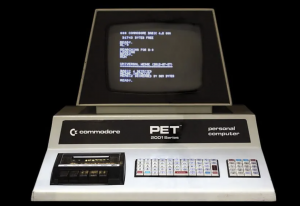
Figure 1.1 1990’s Apple computer (Friedman, 40)
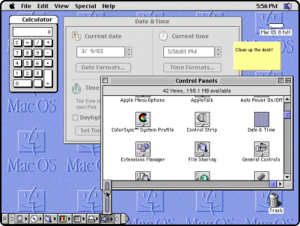
What is needed to make it work or occur?
User interfaces require a graphical user interfaces (GUI), a screen and a back-end operating system that transfers information from computer script language (e.g. code) to graphic images of icons, buttons or text-boxes. The backend systems that power UI spaces in computers are more commonly referred to as Mac OS in Apple or Windows for non-Apple personal computers.
On websites, like Facebook or Amazon, users usually encounter a user interface made up of a combined set of Hyper Text Markup Language (HTML) and Cascading Style Sheet (CSS) code which primarily dictates the webpage’s layout, colour schemes, and text-box sizes, to name a few. For more advanced animations, such as drop-down menu bars or log-in text-boxes, user interfaces on modern-day websites use the JavaScript programming language to create animated functionalities.
How does it resemble or differ from something else?
Since user interfaces are often designed with the goal of allowing non-technical users to operate technical computers, digital UIs are often made to replicate what the user is currently doing on their device. This is done through the WYSIWYG display, where the user would navigate a device or webpage and their actions would be mirrored in the UI.
Although they often have a close relationship to each other, user interfaces are very different from the user experience (UX) itself, which non-technical people often think of as interchangeable terms. UIs are only the space that represent the what the user sees while UX is the users’s direct interactive experience with the UI of a computer or website.
How is it used or applied?
Digital device users use a user interface everyday, whether it’s to surf the web or to use the navigation GPS (Global Position System) in their cars. Today, user interfaces are most commonly associated with personal computers or smartphones but the prevalence of UIs is wider than the most people know. TVs, smartwatches, and even tangible keyboards are user interfaces since they allow humans and computers to interact and communicate. Likewise, UIs have become very useful for many businesses trying to improve sales profits.
By creating a user-friendly UI, businesses like Amazon, increase sales profits by incentivizing users to purchase more items virtually than they normally would in-person. For example, Amazon’s “Customers who bought X, also bought Y….” UI feature provides users with recommendations to products that are similar to those they’ve “Added to their [shopping] cart”. (Figure 2).
Likewise, for the non-technical person, UIs are often a way businesses can gain user/customer trust. For example, Google’s consistent logo-search bar placement on a web browser has remained consistent since 1998 due to its user-friendly layout (Figure and as a result Google has become the most popular search engine today.
Figure 2. 2021 Amazon feature “Customers also bought..” (from Amazon Canada Website)
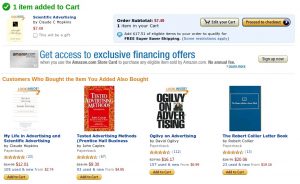
Figure 3. Google 1998 UI (Friedman, 85)
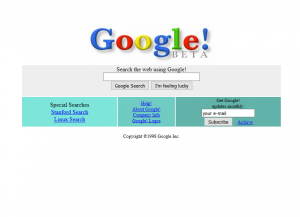
Work Cited
Friedman, Ted (2005). “Chapter 5: 1984”. Electric Dreams: Computers in American Culture. New York University Press.
Round, Mark (February 26, 2004). “Emulating RISC OS under Windows”. OSnews. OSNews. Retrieved May 12, 2011.
Bevan, N. (1995). What is usability? In Y. Anzai, K. Ogawa, and H. Mori (Eds.), Symbiosis of Human and Artifact (pp. 349–354 ). Amsterdam: Elsevier Science B. V.
Peer Review of the Definition Assignment / Term: “Health Equity” Definition
To: Morgan Lorenz, Student ENGL 301 Technical Writing UBC
From: Danisa Rambing, Student ENGL 301 Technical Writing UBC
Date: October 3, 2021
Subject: Review of Report Assignment 1:3 – “Self-management” Definition
Thank you for defining an interesting term and concept with the students of ENGL 301 Technical Writing UBC. This is a wonderful definition of the term “health equity” to a non-technical audience who may be unfamiliar with the concept and its context in healthcare. Please see the review of the document below with some suggestions for improvement.
First Impression: This is a very straightforward definition that meets all the assignment requirements: definition is structured, it includes visual aids, and it includes a list of references.
Organization:
- The organization of the definition is well structured out.
- The selection methods of expansion through history, operating principle, required conditions, and negation fit well and help to properly define the term.
- Great work on the definition of health equity.
- Visuals and figures used must be properly cited with correct placement, please review the textbook for further notes.
Language/Expression:
- In the parenthetical definition the tone is informative and professional, however it would help to use more colloquial terms to explain the term to a non-technical audience.
- The introduction provides context about the outline of the definition and explains the importance of the term.
- In terms of the sentence definition, referring to “social determinant” may be confusing to a non-technical reader. The concept of a determinant may not be very clear to a reader without a firm understanding of a variable or technical ways of analyzing social phenomena.
- Despite slightly esoteric terminology, both the parenthetical and sentence definitions provide a good explanation of the concept “health equity”.
Content:
- The assignment meets the needed requirements, which include the following:
- relatively complex term within discipline
- definition directed to “non-technical readers” with purpose
- composes the forms of definition
- contains four types of expansion methods
- contains visuals
- supplemented by at least three references
Visuals:
- Please make sure visuals are properly labelled and cited.
- Including a brief reference citing where visuals are from can be useful, as well as providing graphic visuals that do not include too much text. This can enhance the quality of the text provided.
Clarity:
- There were a couple of occasions where more specific terms could have been explained a bit more thoroughly to provide a clearer definition on health equity.
- For example, in the operating principles section of the expanded definition, it was difficult to fully understand how analyzing social concepts through variables could provide a clearer picture of the “social determinants” of health.
- The explanation of negation and why health equity is important today is quite vague and doesn’t provide specific case examples of the current problems surrounding health equity or in what context might the audience relate to the term.
- For example, the statement “individuals who don’t have access to fitness centres, medical facilities or community centres have lower health equity” shows a good understanding of health equity, but it does not specify an example of how it might be a disadvantage of “accessibility and convenience”.
- Being descriptive in the examples allows readers to clearly distinguish what it entails exactly.
Highlights/Weaknesses:
- The history portion in the expanded definition was very informative and interesting.
- The mix of active voice and passive voice worked quite well in the overall context of the term, since it provides a clear and direct explanation of the term while be cognizant of the fact that health equity varies for different demographics and specific individuals.
- The required conditions component could have gone deeper in explaining how assessment health equity requires a “myriad of variables” and what an “individual’s vitality” entails, specifically to different demographics of people.
- Some portions of the assignment were repetitive. For example, the “required components” were informative, but they repeated the same information provided in the operating principles, such as the concept of variables determining health equity.
Works Cited List:
- The use of references were clear and informative, but it often included full authors’ names which made the text longer than it should be. As a result, this distracts the reader from the textual analysis by overwhelming them with in-text citations.
- Overall, the references demonstrated a thorough understanding of the concept of health equity.
Purpose/Audience:
- The definition has been described for the intended non-technical audience.
- It clearly describes the concepts needed to understand the concept of health equity.
Concluding Comments:
This definition was a very informative read, well organized and properly executed. The following edits should edits would make this wonderful definition.
- Further details on examples and descriptions
- Language use
- Reviewing Works Cited list and decreasing in-text citations.
Thank you for this wonderful definition. The written definition of health equity is on track to success, and clearly illustrates the ability to define technical terms in the ENGL 301 Technical Writing Course. Please do not hesitate to ask any questions.
Best,
Danisa Rambing
Formal Report Proposal Memorandum
Memorandum
To: Dr. Erika Paterson, Instructor ENGL 301 Technical Writing UBC
From: Danisa Rambing, ENGL 301 Technical Writing Student at the (UBC) University of British Columbia
Date: October 15, 2021
Subject: Proposal for the University of British Columbia’s VP Finance & Operations (VPFO) Portfolio to Expand Financial Aid resources towards UBC Arts Undergraduate students
Introduction
The Arts faculty of the University of British Columbia (UBC) is known to be a centre for research and teaching and consistently makes up the largest faculty of undergraduate each year–many of which rely on government financial aid to pay for their schooling. As one of the most biggest faculties at UBC, the tuition is consistently increasing each year for domestic Arts students while exponentially skyrocketing for international Arts students.
With the costs of living in Vancouver, students who come from middle-class households can be left out in many financially-dependent activities, such as going on club trips or study abroad programs. Likewise, most Arts students sacrifice the quality of their education by having to commute long hours to get to and from classes due to the high cost of living near the university’s campus. In addition to the university’s small amount of financial aid, government-based financial loans only cater to those who are 1) a permanent resident of the province or 2) Canadian citizens, two conditions which often eliminate international students requiring financial aid and/or Canadian immigrants without documentation. These factors work together to create socio-economic bias in the demographic of UBC Arts students who can achieve good quality education and university experience. In this sense, the purpose of this proposal intends to attract the attention of UBC VP Finance & Operations (VPFO) Portfolio to expand financial resources for UBC Arts undergraduate students. With a concise and efficient outline of UBC’s budget structure, and the current scholarships for UBC [solely] Arts students, the purpose of this proposal is to elaborate the benefits and urgency for more equitable scholarships and re-organizing the current scholarships to make them more equitable.
Statement of Problem
The lack of financial aid towards Arts undergraduate students at the University of British Columbia creates an economically biased and elitist environment for lower to middle class students to attend university as an Arts student. The major implications of this problem are two: first, in the face of exponentially increasing living costs in Vancouver, the lack of financial aid prevents many potentially successful students from achieving their highest potential; second the university’s reputation of high tuition costs and lower financial aid systematically deters lower to middle class applicants from applying to UBC.
Proposed Solution
One possible solution for the lack of financial aid at UBC is for the VP Finance & Operations (VPFO) Portfolio of UBC to provide more funding for students by redistributing the university’s current budgeting. For example, the university provides only a select few scholarships (less than 10) that are actually given with money from the University endowment, an operation that is worth over 2 billion CAD dollar as of March 2021 (UBC 13). While scholarships like the UBC Centennial scholarship can provide a single student with a full ride scholarship to attend university, many students who fall short of the highly restrictive requirements for big scholarships miss out on financial aid.
Likewise, with many of the university’s popular figures earning high salaries, such as the university’s president, Santa Ono, who makes a whopping 600K annually, a redistribution of university’s money towards increasing financial aid will quite possibility be an optimal solution to allowing more students to achieve success and in time will provide the university with a more inclusive reputation.
However, these solution does not come with unwarranted consequences. Due to the sheer size of UBC’s operations teams, re-orienting scholarships can take a large amount of paperwork and might not be implemented until years later. However, with the help of the VPFO portfolio, this report aims to demonstrate the urgency of this demand and expedite the processes necessary to provide more funding for Arts students.
Scope
To assess the possibility of increasing financial aid at the University of British Columbia, I plan to pursue research in the following areas of inquiry:
- Which specific Arts majors should UBC’s increased financial aid target?
- What is the optimal amount of financial aid the VPFO Portfolio could provide? (e.g. 10 $1000 scholarships or 1 $10,000 scholarship)
- What are the logistical repercussions of the VPFO Portfolio increasing financial aid to Arts undergraduate students Arts?
- How are other UBC faculties providing scholarships and bursaries for their students?
- How large is the demand for increased financial aid?
Methods
My primary data sources will include surveying current Arts students at UBC, reviewing the VPFO Portfolio’s annual budget report, news reports regarding students’ responses to UBC’s financial assistance towards Arts students (via UBC’s student newspaper, The Ubyssey), and reviews of 2020-onward council minutes of the AMS student governing board, the University’s student government who voices the concerns of the student population. I will round out my primary research by observing direct financial/budget reports of the VP Finance and Operations Portfolio (e.g. Consolidated Financial Statements) and the financial concerns raised in the AMS’ leadership’s platforms in regards to Arts undergraduate students.
Secondary sources will include scholarly publications of socio-economic and psychological role of financial aid in the school place, and a review of a study of Vancouver’s growing inflation rate (e.g. cost of living, food).
My Qualifications
I’m a current student on financial loans and I have been aware of the university’s lack of financial aid towards Arts undergraduate students since 2016. I’m a former Arts undergraduate student, with a degree in Political Science and in addition to that, I have created numerous academic and published news reports on Vancouver and UBC’s economic environments.
Conclusion
Action is needed to create a more inclusive and diverse environment in UBC Arts and increasing financial aid can help with that. By addressing the six areas of inquiry mentioned earlier, I can determine the success of implementing more financial aid at the university while also proving the feasibility of implementing this goal. With approval, I will begin research at once.
Works Cited:
Coonrod, Lane, “The Effects of Financial Aid Amounts on Academic Performance”, The Park Place Economist, Vol. 16. Issue 1.
Ma, Tiffany, The AMS has submitted its budget priorities to UBC. Here’s what it’s asking for, The Ubyssey, https://www.ubyssey.ca/news/ams-budget-priorities-ubc-2021/?ref=frontpage
Simon Fraser University, SFU Awards, Bursaries and Scholarships Database, https://awards-search.sfu.ca/. Qualtrics Survey, https://ubc.ca1.qualtrics.com/jfe/form/SV_brQ2ddkLIUz5YYm.
UBC Arts, A Common Ground: Arts Student Centre Opens its Doors, https://www.arts.ubc.ca/news/a-common-ground-arts-student-centre-opens-its-doors/
UBC Faculty of Arts, Funding, https://www.arts.ubc.ca/student-support/funding/.
UBC PAIR, Demographics by Faculty at UBC Vancouver (Undergraduate), November 15, 2021 UBC VICE-PRESIDENT FINANCE & OPERATIONS PORTFOLIO (VPFO), https://vpfo.ubc.ca/
Warburton, Moira, Financial aid for domestic students: the money’s there, the education’s not, The Ubyssey, https://www.ubyssey.ca/news/financial-aid-at-ubc-for-domestics-is-pretty-good-but-students-dont-get-fina nces/.
LinkedIn is a popular social media platform used to network and connect with professional colleagues and potential employers. Maintaining an updated LinkedIn profile is critical in job-searching in the modern day. Here are some best practices when using LinkedIn:
- Create a LinkedIn profile with a profile picture you’d like future employers and professional networks to see. A LinkedIn profile photo can help build a personal brand and provide employers and professional colleagues with a great first impression. (Utz and Breuer, 3)
- Provide your education credentials, work experience and skills. Posting your professional information on LinkedIn is a great way to make use of the platform’s search-engine optimization recommendation tools that helps attract potential employers and job openings to profiles with relevant skills and work experience. (Buettner, 10)
- Determine a professional audience to target. When using LinkedIn, it’s important to use the platform’s built-in recommendation systems to bolster a profile’s viewership and website traffic. Including keywords or phrases, such as “Proficiency in Microsoft Office” or “Adept at Google Analytics” can help attract employers. (Davis et al. 5)
- Find out about networking events. Being able to connect with a potential client, colleague or employer through LinkedIn is one of the best benefits the platform offers its users. LinkedIn users can find individuals they’ve met in networking events, meetings or interviews and follow up with them to create a lasting professional relationship.
- Learn more about growing industries and career fields. LinkedIn provides its users with a way to learn more about various career industries and best workplace practices through a content feed that provides users notifications of posts other LinkedIn users posted or reacted to (i.e. Liked). (Utz and Breuer, 6)
- Make meaningful personal connections. When reaching out to potential employers or colleagues, try to build personal relationships by finding common interests.
- Be active and show your presence. Try to engage and act as a helping hand to individuals through the digital platform by liking and providing comments on LinkedIn posts.
- Cold direct messaging. LinkedIn is a great way to ask a potential employer for advice on how to obtain a position and their company, or ask someone currently employed in that company to provide advice for interviews.
- Take a LinkedIn class. LinkedIn has a large amount of free online courses for any LinkedIn user to take. These courses include, but are not limited to data analytics, programming, project management, and even creative writing.
- Keep up to date. Industries and professions are constantly changing, and LinkedIn is a useful way of keeping up-to-date with the latest professional trends, technological tools, and available job opportunities.
Works Cited:
Buettner, R. (2017). Getting a job via career-oriented social networking markets. Electronic Markets, 27(4), 371-385. doi: 10.1007/s12525-017-0248-3
Davis, J., Wolff, H., Forret, M., & Sullivan, S. (2020). Networking via LinkedIn: An examination of usage and career benefits. Journal Of Vocational Behavior, 118, 103396. doi: 10.1016/j.jvb.2020.103396
“How to Use LinkedIn for Professional Development & Networking.” LearnHowToBecome.org, 17 Nov. 2020, https://www.learnhowtobecome.org/career-resource-center/linkedin-professional-development-and-networking/.
“LinkedIn Best Practices for Networking Success.” Social Hire,
https://social-hire.com/blog/candidate/linkedin-best-practices-for-networking-success.
Utz, S., & Breuer, J. (2019). The Relationship Between Networking, LinkedIn Use, and Retrieving Informational Benefits. Cyberpsychology, Behavior, And Social Networking, 22(3), 180-185. doi: 10.1089/cyber.2018.0294
Memo to Evan Crisp
MEMORANDUM
To: Evan Crisp, UBC Student
From: Danisa Rambing, Student ENGL 301 Technical Writing UBC
Date: November 8, 2021
Subject: Tips for Writing Effective Email Messages with You Attitude
Please find below some best practices when writing a professional email to a professor.
The examples provided can help act as a tool of assistance in writing a professional email. Likewise, these suggestions embody a writing approach which incorporates a “you attitude” style of writing that addresses the reader as a primary audience and therefore addresses them in a position of significance.
Best practices tips when writing professional emails:
- Writing email messages that begin with a polite and warm introduction and incorporate the name of the addressee helps the correspondence begin in an inviting and friendly manner. For example, starting the email off with a “Good morning (Addressee name)” helps establish the fact that the addressee is the primary audience of the email.
- In emails, include contact information and methods of following up to the email sender. This allows others to reach out to the sender in the event that emails are no longer a way of communicating.
- Buzzwords in the subject line of the email helps encapsulate the email’s contents and help reduce ambiguity for the reader and save their time by reducing unnecessary filter words. As a result, this will improve efficiency and efficacy in an email correspondence.
- Ensure that emails sent have been proofread and any necessary files or attachments mentioned in the email are inside the email. For example, if an email mentions that a link to a certain website will be attached below, ensure that the correct website being mentioned is linked in the email. Correcting typos or small mistakes such as these will help attract engagement in the email correspondence.
- Make sure the name of the email comes is professional and includes the name of the sender. This will clarify to the email reader who the email correspondence is coming from and how to engage in the discussion.
- When providing any sort of criticism, be sure that the email utilizes a sandwich method of criticism, which puts the critical form of feedback in between two or more positive comments and appreciative words. By focusing on positivity, readers will be more willing to engage and accept the criticism as a suggestion towards improvement rather than a personal attack.
Email correspondences are an important way of communication with others and often leaves a great impression of the sender’s professional personality. In this sense, there is room for improvement in terms of professional tone and communication etiquette—both of which currently does not show politeness and courtesy. While it is informative, the email sent to addressees should allow others to understand and efficiently respond to the message in the email.
These suggestions can help improve reader responses and potentially help secure a position in a desired class. If there are any questions, please let me know. Thank you for your time and I hope you have a great day.
Complaint letter and Response letter
Letter #1 – Complaint Letter
Danisa Rambing
1010 Walnut Ave
Vancouver, BC
V6T 7Q3
November 12, 2021
Nico May, Manager
McDonalds UBC
101-5728 University Blvd
Vancouver, BC
V6T 1K6
Attention: McDonalds Customer Services
Subject: Rude service on November 11, 2021
Dear Mr. May,
I hope you receive this email well. Today I am writing to you about a recent unsatisfactory dining experience I’ve had at the UBC McDonalds branch on November 11, 2021. I am saddened to say this incident has heavily lessened my respect for the establishment and the employees which were present at the time.
Yesterday, I ordered a Big Mac combo with a medium soda at around 1:30 in the afternoon and when my order was ready, a McDonalds employee reached for my food and licked it before handing it to me. The employee then proceeded to yell vulgar and insensitive comments at me regarding my outfit and my hair at a very loud volume. As a loyal customer, I am shocked at the magnitude and insensitivity of the other employees as they stood there and recorded the incident. I later found the recorded incident on a WhatsApp group chat, which had manage to garner over one million views in only a few hours.
After this traumatic incident, I spoke over the phone with a customer representative at the UBC branch, who hung the phone up on me in a very rude and aggressive manner. As you can see, the services I’ve received from McDonalds UBC have been subpar, rude and very uncharacteristic of the McDonalds establishment that I frequent. Therefore, I believe I am owed a proper apology and refund.
I have enclosed all the visual images of my meal and recorded proof of the incident yesterday afternoon.
Please let me know how we can follow up regarding this incident. I am looking forward to hearing back from you.
Sincerely,
Danisa Rambing
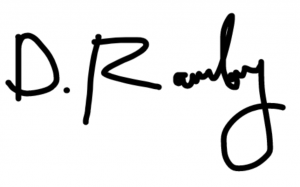
Enclosure: Receipt, Photos of Meal, & Video footage of employee yelling
Letter #2 – Bad News Adjustment Letter
Nico May, Manager
McDonalds UBC
101-5728 University Blvd
Vancouver, BC
V6T 1K6
November 13, 2021
Danisa Rambing
1010 Walnut Ave
Vancouver, BC
V6T 7Q3
Greetings Ms. Rambing,
I hope you receive this email in good health. I sincerely apologize for the traumatic incident which has occurred. Our establishment has a mission to consistently provide a fine and positive dining experience to all our customers, regardless of race, gender, cultural or religious backgrounds. With this being said, we have dismissed the mentioned employee from our business and will look into a full investigation of our entire UBC branch staff.
As a tangible way to show our appreciation for your loyalty, we will be providing a full refund for your meal and we will be providing you with five $30 vouchers to any McDonalds restaurant of your choosing. Rudeness and vulgarity are traits that we do not tolerate whatsoever and hope that you do not recognize this one incident as a common characteristic of our business.
Providing quality services and food to customers has always been our biggest priority and we thank you for bringing this incident up to our attention. Please do not hesitate to contact me if you have any further questions.
Sincerely,
Nico May, Manager

McDonalds UBC
Enclosure: Vouchers & Letter of Apology